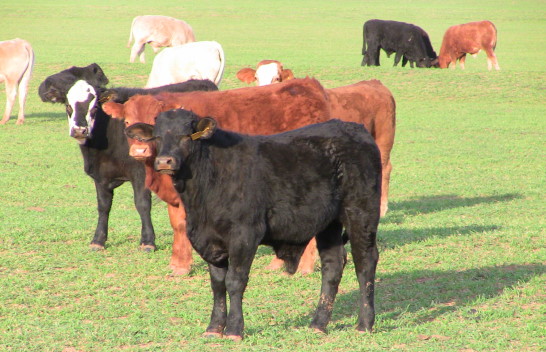There are three main types of nutritional supplementation that are often discussed in regard to stocker cattle grazing wheat pasture: 1) minerals, 2) ionophores and 3) energy feeds.

Wheat forage is generally marginal to sufficient in phosphorus and magnesium, high in potassium, and low in calcium. Therefore, calcium is the mineral that most often limits growth in cattle grazing wheat. A 550-pound steer gaining 3 pounds per day has a calcium requirement of 33 grams. If the steer is consuming 16 pounds of forage, he is deficient 7.5 grams. If a steer consumes 2 ounces of mineral per day, then the calcium concentration in the mineral package needs to be 13.2 percent. If mineral intake is higher, calcium concentration can be reduced. Most commercially available wheat pasture mineral packages will be high in calcium (7 to 17 percent) and low in phosphorus (3 to 6 percent). Data from the Noble Foundation has shown an improvement in average daily gain of 0.2 pounds per day when providing a mineral supplement to cattle on wheat pasture (Reuter, 2013).
Providing an ionophore to cattle grazing wheat pasture is a very economical practice that all producers should employ if not raising cattle for a "natural" market. In the same Noble Foundation study, inclusion of the ionophore monensin increased average daily gain 0.2 pounds per day. This increase in gain is additive to the gains shown through mineral supplementation alone. Ionophore intake should be targeted for 100 to 200 milligrams per day. An ionophore-containing mineral will generally cost approximately $25 per 50-pound sack. If mineral intake is 3 ounces per head per day, cost per animal is 9 cents per day. Average daily gain is increased by 0.4 pounds per day, which equates to an increase in revenue of 20 cents per head per day if grazing cattle on a cost per pound of gain basis at 50 cents per pound. Over a 105-day grazing period, each animal profits an additional $11.55.
Supplemental energy in the form of high-starch or high-fiber feedstuffs can be used to increase individual animal gain, decrease performance risk and increase gain per acre through increased stocking rates. Data from Oklahoma State University showed that providing supplemental energy at a rate of 0.65 percent of bodyweight to 533-pound steers increased average daily gain by 0.33 pounds per day over a three-year study (Horn et al., 1995). This results in a supplement conversion ratio on an animal basis of 10.5:1. With feed costs at approximately $200 per ton, the value of gain would need to be greater than $1.05 per pound to be economical. Generally, feeding supplemental energy is not done to solely increase individual animal gain but to also increase stocking rate. In that same Oklahoma State study, providing the additional feed allowed a 33 percent increase in stocking rate, which brings the supplement conversion ratio on a per acre basis to 5:1. With $200 per ton feed, the value of additional gain would need to be greater than 50 cents per pound to be economical. This number is much closer to being feasible in today's market if the producer owns both the wheat and cattle. Remember, to capture this more favorable conversion, the stocking rate must be increased.
Click here to see more...